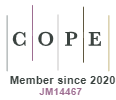Reducing the response time to the homeless with the use of Humanitarian Logistics Bases (BLHs) composed of shipping containers adapted as temporary shelters
DOI:
https://doi.org/10.5585/geas.v10i1.19494Keywords:
Natural disasters, Humanitarian Logistics Bases, Decision making, Shipping containers, Temporary shelters.Abstract
Objective: Propose the use of adapted shipping containers as temporary shelters for prompt response to homeless victims of natural disasters in Brazil.
Methodology/Approach: In this study we call this alternative as Humanitarian Logistics Bases (BLHs). To carry out this proposition, a data collection was carried out with the public bases from 2013 to 2018 on the occurrence of natural disasters in the country. The impacts and consequences of these disasters were analyzed and quantified the total number of homeless victims in the period. To locate the BLHs, the p-Median method was applied in conjunction with Simple Multi-Attribute Rating Technique (SMART) to measure the weight of each decision criterion in the localization process. The number of BLHs was defined by the clustering method, considering the distribution of homeless people by State.
Relevance: Considering the aspects related to the end of life of containers, which has generated a new market for container houses, it was that this research identified a gap in terms of adapting these containers for temporary shelters. Thus, a study that considers the impacts of climatic events on Brazilian states is justified, as well as the ability to use alternative instruments to increase the state's prompt response to meet the needy.
Results: In the end, the results showed that the development of a methodological process for locating the BLHs, composed of shipping containers, is a possible strategy to improve the response to victims displaced by natural disasters. A greater incidence of disasters was observed in the country's coastal zone, as well as in the South, Southeast and North regions, and thus there was a need for 52 BLHs and a total of 90,775 container houses in a support network to serve the main affected regions. by natural disasters.
Contributions: This research sought to fill a gap on a procedure for locating temporary shelters of reused shipping containers for humanitarian logistics, in order to contribute so that public agencies can offer a quick combat to the homeless during the post-disaster phase.
Conclusion: The use of shipping containers is a sustainable alternative to reduce the response time to the homeless. This approach can allow entities linked to the maritime sector to enter into partnerships with the public sector in order to meet a repressed demand in the country due to the recurrence of problems of climatic events, besides contributing to reduce the problem of final destination, providing favorable conditions to container recycling. And they could also offer relief from other extraordinary events, which lacked temporary mobile structures, such as war and pandemic actions.
Downloads
References
Abulnour, A. H. (2014). The post-disaster temporary dwelling: Fundamentals of provision, design and construction. Hbrc Journal, 10(1), 10-24.
Alçada‐Almeida, L., Tralhao, L., Santos, L., & Coutinho‐Rodrigues, J. (2009). A multiobjective approach tolocate emergency shelters and identify evacuation routes in urban areas. Geographical analysis, 41(1), 9-29.
Aleksic, J., Mihajlovic, V., & Jovanovic, T. (2014). Cost-benefit analysis of shipping container emergency shelters: the case study of the Republic of Serbia. Aktual'ni Problemy Ekonomiky= Actual Problems in Economics, (158), 56.
Barcellos, P. D. C. L., Da Costa, M. S., Cataldi, M., & Soares, C. A. P. (2017). Management of non-structural measures in the prevention of flash floods: a case study in the city of Duque de Caxias, state of Rio de Janeiro, Brazil. Natural Hazards, 89(1), 313-330.
Barcellos, P. D. C. L., Silva, F. P. D., Vissirini, F. S. B., Magalhães, C. D. A., Terra, J. M., Dutra, M. R. F., & Amaral, I. C. F. D. (2016). Diagnóstico meteorológico dos desastres naturais ocorridos nos últimos 20 anos na cidade de Duque de Caxias. Revista Brasileira de Meteorologia, 31(3), 319-329.
Barreto, S., Ferreira, C., Paixão, J., & Santos, B. S. (2007). Using clustering analysis in a capacitated location-routing problem. European Journal of Operational Research, 179(3), 968–977.
Baray, J., Cliquet, G. (2013). Optimizing locations through a maximum covering/p-median hierarchical model: Maternity hospitals in France. Journal of Business Research, 66(1), 127-132.
Bayram, V., Yaman, H. A stochastic programming approach for Shelter location and evacuation planning. RAIRO-Oper. Res. 52 (3) 779-805, 2018. Doi: 10.1051/ro/2017046.
Celik, E. (2017). A cause and effect relationship model for location of temporary shelters in disaster operations management. International journal of disaster risk reduction, 22, 257-268
CEPED (Centro Universitário de Estudos e Pesquisas sobre Desastres). Relatório de danos materiais e prejuízos decorrentes de desastres naturais no Brasil: 1995 – 2014. Florianópolis: Universidade Federal de Santa Catarina, 230 p, 2016. Disponível em: http://www.ceped. ufsc.br/wp-content/uploads/2017/01/111703- WP-CEPEDRelatoriosdeDanoslayout-PUBLIC- PORTUGUESE-ABSTRACT-SENT.pdf
Costa, G. G. (2016). Identificação de Municípios Homogêneos Quanto A Ameaças Ambientais No Estado do Rio de Janeiro por Two Step Cluster. Revista Brasileira de Gestão Ambiental, 10(1), 62-71.
Coutinho-Rodrigues, J., Tralhão, L., & Alçada-Almeida, L. (2012). Solving a location-routing problem with a multiobjective approach: the design of urban evacuation plans. Journal of Transport Geography, 22, 206-218.
Guimarães, D. F. S, dos Santos Belmiro, C., Alves de Vasconcelos, M., & dos Santos Pereira, H. (2019). Fluvial environmental disasters: risk perception and evaluation of government responses by riverine populations in Cacau Pirêra, Iranduba/AM. Sustainability in Debate/Sustentabilidade em Debate, 10(3).
Dalal, J., Mohapatra, P. K. J., & Mitra, G. C. (2007). Locating cyclone shelters: A case. Disaster Prevention and Management: An International Journal, 16(2), 235–244.
de Almeida, L. Q., Welle, T., & Birkmann, J. (2016). Disaster risk indicators in Brazil: a proposal based on he world risk index. International journal of disaster risk reduction, 17, 251-272.
de Mendonca, M. B., & da Silva, D. R. (2020). Integration of census data based vulnerability in landslide risk mapping-The case of Angra dos Reis, Rio de Janeiro, Brazil. International Journal of Disaster Risk Reduction, 50, 101884.
de Mendonca, M. B., & Gullo, F. T. (2020). Landslide risk perception survey in Angra dos Reis (Rio de Janeiro, southeastern Brazil): A contribution to support planning of non structural measures. Land Use Policy, 91, 104415.
Debortoli, N.S., Camarinha, P.I.M., Marengo, J.A. et al. An index of Brazil’s vulnerability to expected increases in natural flash flooding and landslide disasters in the context of climate change. Nat Hazards 86, 557–582 (2017). https://doi.org/10.1007/s11069-016-2705-2.
DEFESA CIVIL. Glossário de defesa civil estudos de riscos e medicina de desastres. Disponível em: <http://www.defesacivil.mg.gov.br/images/documentos/Defesa%20Civil/manuais/GLOSSARIO-Dicionario-Defesa-Civil.pdf>. Acesso em: 03/04/2019.
Degrossi, L. C., de Albuquerque, J. P., Fava, M. C., Mendiondo, E. M. (2014, July). Flood Citizen Observatory: a crowdsourcing-based approach for flood risk management in Brazil. In SEKE (pp. 570-575).
Dolman, D. I., Brown, I. F., Anderson, L. O., Warner, J. F., Marchezini, V., & Santos, G. L. P. (2018). Re-thinking socio-economic impact assessments of disasters: The 2015 flood in Rio Branco, Brazilian Amazon. International journal of disaster risk reduction, 31, 212-219.
Hakimi, S. L. (1965). Optimum distribution of switching centers in a communication network and some related graph theoretic problems. Operations research, 13(3), 462-475.
Hong, Yan. A study on the condition of temporary housing following disasters: Focus on container housing, Frontiers of Architectural Research, 2017.
IBGE. Pesquisa de Informações Básicas Municipais. Perfil dos Municípios Brasileiros, 2013. Disponível em: <http://www.ibge.gov.br>. Acesso em: 20/02/2018.
Islam, H., Zhang, G., Setunge, S., & Bhuiyan, M. A. (2016). Life cycle assessment of shipping container home: A sustainable construction. Energy and Buildings, 128, 673–685. https://doi.org/10.1016/j.enbuild.2016.07.002.
Johnson, C., Lizarralde, G., Davidson, C. H. (2006). A system view of temporary housing projects in postdisaster reconstruction. Construction Management and Economics, n. 24, p. 367–378. doi:10.1080/01446190600567977.
Kunz, N., Reiner, G., & Gold, S. (2014). Investing in disaster management capabilities versus pre-positioning inventory: A new approach to disaster preparedness. International Journal of Production Economics, 157, 261-272.
Lall, S. V., Deichmann, U. Density and Disasters Economics of Urban Hazard Risk. The World Bank Research Observer, 2009.
Liao, K., Guo, D. (2008). A Clustering-based approach to the capacitated facility location problem. Transactions in GIS, 12(3), 323–339.
Ling, P. C. H., Tan, C. S., Saggaff, A. (2019, September). Feasibility of ISO shipping container as transitional shelter-a review. In IOP Conference Series: Materials Science and Engineering (Vol. 620, No. 1, p. 012056) IOP Publishing.
Marcelino, E. V. Desastres Naturais e Geotecnologias: Conceitos Básicos. Caderno Didático nº 1. INPE/CRS, Santa Maria, 2008.38p, 2008.
Mendes, R. L. D. C. (2019). Logística de ajuda humanitária na operação acolhida: a mobilização em apoio à população Venezuelana.
Menezes, J. A., Confalonieri, U., Madureira, A. P., Duval, I. D. B., Santos, R. B. D., & Margonari, C. (2018). Mapping human vulnerability to climate change in the Brazilian Amazon: the construction of a municipal vulnerability index. PloS one, 13(2), e0190808
Nappi, M. M. L., Souza, J. C. Conceitos e ferramentas na engenharia de transportes. Desastres naturais: seleção e localização espacial de abrigos para flagelados, Kanashiro. – Ponta Grossa, PR: Atena Editora, 2019.
Nappi, M. M. L., Souza, J. C. Disaster Management: Hierarchical Structuring Criteria for Selection and Location of Temporary Shelters. Natural Hazards, v. 75, n. 3, p. 2421-2436, 2014. Disponível em: <https://doi.org/10.1007/s11069-014-1437-4>. Acesso em: 22/05/2015.
Noji, E. K. (1991). Natural disasters. Critical care clinics, 7(2), 271-292.
Peña, J. A., Schuzer K. Design of Reusable Emergency Relief Housing Units Using General-Purpose (GP) Shipping Containers. Int. J. Eng. Res. Innov., vol. 4, no. 2, pp. 55–64, 2012.
Pizzolato, N. D., Raupp, F. M. P., Alzamora, G. S. Revisão de métodos aplicados em localização com base em modelos da p-mediana e suas variantes. Revista Eletrônica Pesquisa Operacional para o Desenvolvimento, 4, p, 13 42, 2012.
Ramos, A.C; Pereira, N.N. Contêineres marítimos como alternativa para mitigar impactos de desastres naturais. In: 27º CONGRESSO INTERNACIONAL DE TRANSPORTE AQUAVIáRIO, CONSTRUçãO NAVAL E OFFSHORE, 2018, Rio de Janeiro. Anais eletrônicos... Campinas, Galoá, 2020. Disponível em: https://proceedings.science/sobena-2018/papers/reutilizacao-de-conteineres-maritimos--uma-solucao-sustentavel?lang=pt-br. Acesso em: 18 jan. 2020.
Ramos, A.C; Pereira, N.N. Reutilização de contêineres marítimos: uma solução sustentável. In: 27º CONGRESSO INTERNACIONAL DE TRANSPORTE AQUAVIáRIO, CONSTRUçãO NAVAL E OFFSHORE, 2018, Rio de Janeiro. Anais eletrônicos... Campinas, Galoá, 2020. Disponível em: https://proceedings.science/sobena-2018/papers/reutilizacao-de-conteineres-maritimos--uma-solucao-sustentavel?lang=pt-br. Acesso em: 18 jan. 2020.
Revelle, C., Swain, R. Central facilities location. Geographical Analysis, 2, 30–40, 1970.
Soler, L. S., Gregorio, L. T., Leal, P., Gonçalves, D., Londe, L., Soriano, É., & Saito, S. (2013, October). Challenges and perspectives of innovative digital ecosystems designed to monitor and warn natural disasters in Brazil. In Proceedings of the Fifth International Conference on Management of Emergent Digital EcoSystems (pp. 254-261).
Tang, C. S., & Ling, P. C. (2018). Shipping Container as shelter provision solution for post-disaster reconstruction. In E3S web of conferences (Vol. 65, p. 08007). EDP Sciences.
Tzeng, G. H., Cheng, H. J., Huang, T. D. Multi-objective optimal planning for designing relief delivery systems. Transportation Research Part E, v. 43, p. 673–686, 2007.
UNHCR (United Nations High Commissioner for Refugees). Handbook for emergencies, 2nd Ed., Geneva, 2000.
Vergueiro, Waldomiro. Qualidade em serviços de informação. São Paulo: Arte & Ciência, 2002.
Valencio, N. F. L. S. Desastres, ordem social e planejamento em Defesa Civil: o contexto brasileiro. Saúde e Sociedade, v. 19, n. 4, p. 748-762, 2010. doi: http:// dx.doi.org/10.1590/S0104-12902010000400003.
Zabinski, K. B., brodaski, M. A., Campanelli, R. L. Shipping Container Emergency Shelters, 2010. Disponível em: https://digitalcommons.wpi.edu/mqp-all/639.
Zhang, S., setunge, G., Van elmpt, S. Using Shipping Containers to Provide Temporary Housing in Post-disaster Recovery: Social Case Studies. Procedia Econ. Financ., vol. 18, no. September, pp. 618–625, 2014.
Downloads
Published
How to Cite
Issue
Section
License
Copyright (c) 2021 Ana Carolina Souza Ramos, Newton Narciso Pereira

This work is licensed under a Creative Commons Attribution-NonCommercial-ShareAlike 4.0 International License.
- Abstract 1209
- PDF 602
- PDF (Português (Brasil)) 311









